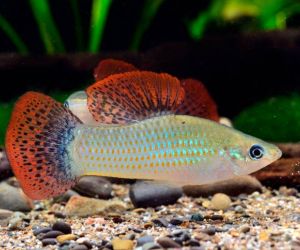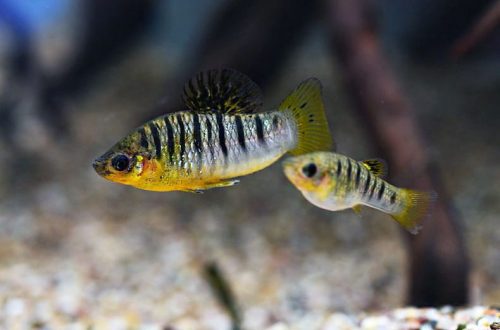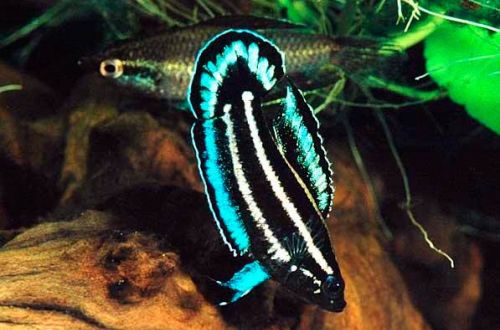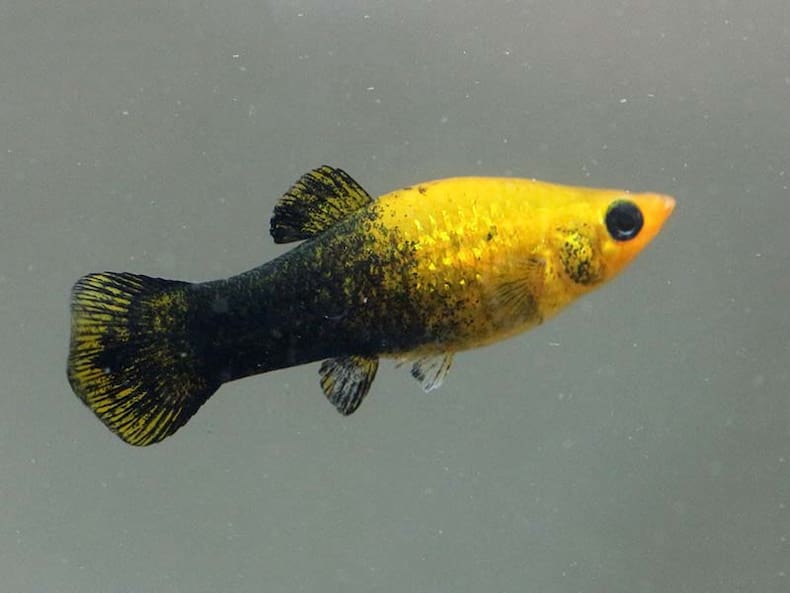
Mollies black-yellow
Molliesia black-yellow or “Gold dust”. The names listed are translations from the English trade names Gold And Black Molly Fish and Gold dust molly. All of them belong to the color variation of Sphenops Molliesia, which has a contrasting two-tone body color. The front part is painted in yellow or gold, and the rear tail part has black shades. The dark color is the result of the fusion of numerous speckles, which are visible at the border of the transition from yellow to black. Presumably, “spotting” is inherited during hybridization with another breeding form – Molliesia Dalmatians.

Adult individuals reach a length of 8–12 cm. If a similar coloration appears in the Lyretail Moll, then the size will be somewhat larger due to the enlarged tail. The remaining morphological features (shape of the body and fins) correspond to Molly sphenops.
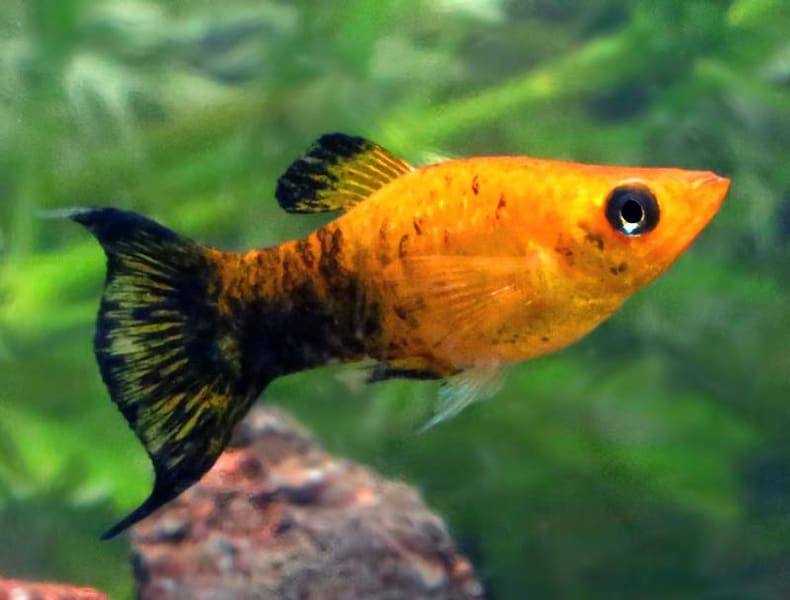
Maintenance and care, arrangement of the aquarium
The optimal size of the aquarium for a group of 3-4 fish starts from 100 liters. Dense plant growth should be included in the design, which will provide a place to hide and serve as an additional food source for Molliens that prefer a diet rich in plant components. For this reason, it is desirable to plant unpretentious and hardy varieties, such as vallisneria, anubias, naiads, pinnates, various aquatic ferns and mosses.
Brief information:
- The volume of the aquarium – from 100 liters.
- Temperature – 21-26°C
- Value pH — 7.0–8.5
- Water hardness – medium and high hardness (15-35 dGH)
- Substrate type – any
- Lighting – any
- Brackish water – acceptable in a concentration of 10-15 gr. salt per liter of water
- Water movement is weak
- The size of the fish is 8-12 cm.
- Nutrition – any feed with herbal supplements
- Temperament – peaceful
- Content alone, in pairs or in a group
The maintenance is quite simple if several conditions are met: a daily supply of quality food, peaceful aquarium neighbors and maintaining high water quality within an acceptable range of temperatures and hydrochemical values.
Fish prefer slightly alkaline water with high values of total hardness. However, during artificial selection they have adapted to life in other conditions – soft, slightly acidic water. It is important to prevent the accumulation of organic waste (feed leftovers, excrement) by regular maintenance and by ensuring that the filtration system runs smoothly.
Food
Most popular dry food can be considered as the basis of a daily diet. A good choice would be food tailored to the needs of this type of fish, produced by many well-known manufacturers. Feed 1-2 times a day in the amount eaten within 5 minutes.
Behavior and Compatibility
Gets along well with most fish of comparable size and temperament. The most harmonious community is obtained with other viviparous species, such as Swordtails, Guppies, Pecilia.



